 Wastewater. It’s something that will always exist, and will always require collection and treatment. Just like improved water, improved sanitation is one of the key contributing factors to a developed nation, significantly improving public health, educational opportunity, and workforce viability. And while the United States boasts nearly 100% improved water and sanitation, there is still cause for concern.
Wastewater. It’s something that will always exist, and will always require collection and treatment. Just like improved water, improved sanitation is one of the key contributing factors to a developed nation, significantly improving public health, educational opportunity, and workforce viability. And while the United States boasts nearly 100% improved water and sanitation, there is still cause for concern.
In the American Society of Civil Engineers (ASCE) 2013 Report Card, wastewater received a “D” grade. Why? Because our existing infrastructure is in desperate need of repair and replacement, and a significant funding gap exists. This gap can be attributed to the fact that funding has been declining while regulations continue to increase.
 In March of 2015, the Congressional Budget Office (CBO) published a report on annual government expenditures on infrastructure, titled Public Spending on Transportation and Water Infrastructure, 1956 to 2014. The data, collected from the Office of Management and Budget (OMB) for federal expenditures and from the Census Bureau for state and local government expenditures, indicates that federal, state, and local governments in the United States have been investing LESS in water and wastewater infrastructure than ever before. From 1956 to the late 1980s, total government spending increased in real dollars by approximately 3%-4% per year, and then from 1%-2% through 2009. These expenditures include both capital and operations and maintenance (O&M) costs. However, from 2010 until present, total government spending has actually decreased by 8%.
In March of 2015, the Congressional Budget Office (CBO) published a report on annual government expenditures on infrastructure, titled Public Spending on Transportation and Water Infrastructure, 1956 to 2014. The data, collected from the Office of Management and Budget (OMB) for federal expenditures and from the Census Bureau for state and local government expenditures, indicates that federal, state, and local governments in the United States have been investing LESS in water and wastewater infrastructure than ever before. From 1956 to the late 1980s, total government spending increased in real dollars by approximately 3%-4% per year, and then from 1%-2% through 2009. These expenditures include both capital and operations and maintenance (O&M) costs. However, from 2010 until present, total government spending has actually decreased by 8%.
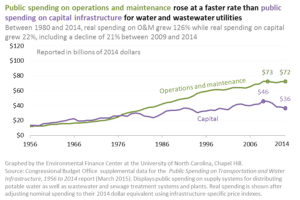 To further complicate matters, capital expenditure has decreased at a faster rate than O&M expenditure. From 1956 to 1980, public spending was basically split between capital expenditures — to build or replace water and wastewater systems — and O&M of the systems. However, since 1980, O&M spending continued to grow at an annual rate of 4%-6% to the 1990s, and then at an annual rate of 1%-3% through 2009, since when it has remained flat. In contrast, capital spending grew at an annual rate of only about 1%-2% since 1980, and has declined at an average annual rate of 4% since 2009. Governments now spend twice as much on O&M of their existing systems than on capital expenditures to repair, rehabilitate, or replace existing assets or for the installation of new infrastructure. In addition, state and local government is now saddled with nearly the full burden of capital expenditure, as federal spending has been steadily on the decline since 1976.
To further complicate matters, capital expenditure has decreased at a faster rate than O&M expenditure. From 1956 to 1980, public spending was basically split between capital expenditures — to build or replace water and wastewater systems — and O&M of the systems. However, since 1980, O&M spending continued to grow at an annual rate of 4%-6% to the 1990s, and then at an annual rate of 1%-3% through 2009, since when it has remained flat. In contrast, capital spending grew at an annual rate of only about 1%-2% since 1980, and has declined at an average annual rate of 4% since 2009. Governments now spend twice as much on O&M of their existing systems than on capital expenditures to repair, rehabilitate, or replace existing assets or for the installation of new infrastructure. In addition, state and local government is now saddled with nearly the full burden of capital expenditure, as federal spending has been steadily on the decline since 1976.
Clearly, municipalities are faced with the almost insurmountable task of staying up to date with all current regulations while also improving outdated and failing systems. Because wastewater collection and treatment is such a crucial aspect of modern day society, it has become paramount that municipalities find cost-effective and efficient ways of maintaining and updating critical infrastructure.

One of the most effective ways in which municipalities can intelligently allocate their limited infrastructure dollars is by implementing a clear and systematic plan of action for capital improvement projects. Typically, asset management is considered to be the standard by which wastewater utilities address capital assets. Defined by the EPA as managing infrastructure capital assets to minimize the total cost of owning and operating them, while delivering the service levels customers desire, asset management certainly plays a key role in smart capital planning. However, asset management should only be part of the equation. Hydraulic modeling and system criticality are two equally important aspects which should be examined when planning long-term capital expenditure.
Tata & Howard’s Wastewater Capital Efficiency Plans™ identify those areas of your wastewater systems needing rehabilitation, repair, or replacement that make the most efficient use of your limited infrastructure dollars by combining the concepts of hydraulic modeling, system criticality, and asset management into a single comprehensive report. Each report is tailored to the individual utility distribution system and provides utilities with a database and Geographic Information System (GIS) representation for each pipe segment within their underground piping system. The CEP report then prioritizes system piping improvements and provides estimated costs for replacement and rehabilitation.
Our three circle approach includes the following:
 Hydraulic modeling
Hydraulic modeling
- Model verification if available
- Compare flows with design carrying capacity
- Hydraulic deficiencies
- History of SSOs
- High infiltration/inflow rates
Critical Components
- Interceptors
- Trunk sewers and force mains
- Residential sewer mains
Asset Management
- Establish score for each pipe segment based on blockages/collapses, I/I rates, installation year, soil corrosivity, PACP structural and maintenance ratings, and other criteria.
A comprehensive CEP provides a utility with not only a prioritized list of logically thought out infrastructure projects, but also a justifiable and defendable plan of action to present to town administrators when planning budgets.
 To continue as a leading industrialized nation, our wastewater utilities must not only remain safe and functional, but also progressive and up to date with current and future regulations. Because funding is declining while costs and population are increasing, it is more important than ever for wastewater utilities to methodically prioritize and plan all repairs and improvements. Only through the implementation of a well-researched and systematic course of action will utilities be prepared to provide safe and dependable wastewater services both now and in the future.
To continue as a leading industrialized nation, our wastewater utilities must not only remain safe and functional, but also progressive and up to date with current and future regulations. Because funding is declining while costs and population are increasing, it is more important than ever for wastewater utilities to methodically prioritize and plan all repairs and improvements. Only through the implementation of a well-researched and systematic course of action will utilities be prepared to provide safe and dependable wastewater services both now and in the future.

 In addition to the six Minimum Control Measures included in the original 2003 Permit, the 2016 Massachusetts MS4 General Permit also specifically includes limits to Total Maximum Daily Loads (TMDLs). TMDLs set pollution limits for affected waterways. These pollution limits represent the maximum amount of pollutant a specific body of water can handle before marine life, wildlife, and/or recreational uses become adversely affected. Because stormwater has the potential to have a significantly negative impact on waterways, TMDLs are a necessary protection measure. Unfortunately, addressing stormwater contributions to TMDLs will require that many communities make some structural and treatment modifications to their stormwater systems, and these take both time and money.
In addition to the six Minimum Control Measures included in the original 2003 Permit, the 2016 Massachusetts MS4 General Permit also specifically includes limits to Total Maximum Daily Loads (TMDLs). TMDLs set pollution limits for affected waterways. These pollution limits represent the maximum amount of pollutant a specific body of water can handle before marine life, wildlife, and/or recreational uses become adversely affected. Because stormwater has the potential to have a significantly negative impact on waterways, TMDLs are a necessary protection measure. Unfortunately, addressing stormwater contributions to TMDLs will require that many communities make some structural and treatment modifications to their stormwater systems, and these take both time and money. Fortunately, stormwater assessments that are conducted by licensed professional engineers, such as Tata & Howard’s MS4 Compliance Assessments, provide a significant return on investment. As part of the assessment, the entire system is meticulously evaluated for the most budget-conscious ways in which to fully meet compliance. Permit exclusions will also be assessed and all previous stormwater work will be documented to establish proper credit. The assessment also provides a well-planned course of action that is defendable when justifying projects and procuring funding.
Fortunately, stormwater assessments that are conducted by licensed professional engineers, such as Tata & Howard’s MS4 Compliance Assessments, provide a significant return on investment. As part of the assessment, the entire system is meticulously evaluated for the most budget-conscious ways in which to fully meet compliance. Permit exclusions will also be assessed and all previous stormwater work will be documented to establish proper credit. The assessment also provides a well-planned course of action that is defendable when justifying projects and procuring funding.
 Water mains play a crucial role in modern day civilization and contribute greatly to public health. Water mains have been in use for over 4000 years, and, through the years, huge strides have been made in the engineering and construction of this critical infrastructure.
Water mains play a crucial role in modern day civilization and contribute greatly to public health. Water mains have been in use for over 4000 years, and, through the years, huge strides have been made in the engineering and construction of this critical infrastructure.





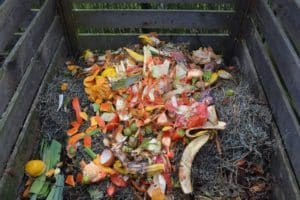 py by donating both food and money to local food banks to help feed everyone efficiently. On June 5th, Tata & Howard encourages everyone to go through their pantries and donate to a local organization for people who need it. Not only will it help save our environment, but will also help the local people in our own communities.
py by donating both food and money to local food banks to help feed everyone efficiently. On June 5th, Tata & Howard encourages everyone to go through their pantries and donate to a local organization for people who need it. Not only will it help save our environment, but will also help the local people in our own communities. the better. On this World Environment Day, let’s all take time to lend a helping hand to our planet. It is up to us as individuals to take action and better our environment. Taking small steps and making an effort to improve the world in which we live is important not only on World Environment Day, but every day. Even if it is a small step, it is still a step in the right direction.
the better. On this World Environment Day, let’s all take time to lend a helping hand to our planet. It is up to us as individuals to take action and better our environment. Taking small steps and making an effort to improve the world in which we live is important not only on World Environment Day, but every day. Even if it is a small step, it is still a step in the right direction.



 Memorial Day is the generally accepted start of summer to most New England communities. Pools are opened, grills are wheeled out from storage, flowers are planted, and beaches are officially opened. And while summer is absolutely breathtaking in New England, it is also a time of increased stress on water quality and supply.
Memorial Day is the generally accepted start of summer to most New England communities. Pools are opened, grills are wheeled out from storage, flowers are planted, and beaches are officially opened. And while summer is absolutely breathtaking in New England, it is also a time of increased stress on water quality and supply.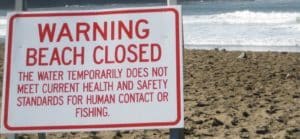 Unfortunately, because of the huge popularity of beaches in the summer, water quality can suffer. Beach closures are common during the summer months, and are a result of pollutants and pathogens entering the water. One of the most common sources of water pollution is human fecal matter from leaky septic systems and sewer overflows. Human waste contains a variety of harmful organisms, including bacteria, viruses, and parasites, that can cause illnesses such as gastroenteritis, hepatitis, and skin infection to humans. Another source of pollution is animal fecal matter from agricultural and stormwater runoff. While runoff contains a number of pollutants including motor oil, pesticides, fertilizers, and trash, arguably the most dangerous and disruptive is animal feces. A single gram of dog feces contains over 23 million parvovirus bacteria in addition to whipworms, hookworms, roundworms, threadworms, giardia, and coccidian. These pathogens and parasites enter waterways through runoff and can have detrimental effects on waterways, aquatic life, and humans.
Unfortunately, because of the huge popularity of beaches in the summer, water quality can suffer. Beach closures are common during the summer months, and are a result of pollutants and pathogens entering the water. One of the most common sources of water pollution is human fecal matter from leaky septic systems and sewer overflows. Human waste contains a variety of harmful organisms, including bacteria, viruses, and parasites, that can cause illnesses such as gastroenteritis, hepatitis, and skin infection to humans. Another source of pollution is animal fecal matter from agricultural and stormwater runoff. While runoff contains a number of pollutants including motor oil, pesticides, fertilizers, and trash, arguably the most dangerous and disruptive is animal feces. A single gram of dog feces contains over 23 million parvovirus bacteria in addition to whipworms, hookworms, roundworms, threadworms, giardia, and coccidian. These pathogens and parasites enter waterways through runoff and can have detrimental effects on waterways, aquatic life, and humans.
 Fortunately, there are policies and regulations in place that directly address seasonal water quality and quantity issues. The EPA, along with other governmental agencies, have enacted several laws that aim to protect the quality of our nation’s beaches:
Fortunately, there are policies and regulations in place that directly address seasonal water quality and quantity issues. The EPA, along with other governmental agencies, have enacted several laws that aim to protect the quality of our nation’s beaches: Outdoor water restrictions and bans: Many communities implement water bans in the summer that severely limit or prohibit outdoor watering.
Outdoor water restrictions and bans: Many communities implement water bans in the summer that severely limit or prohibit outdoor watering.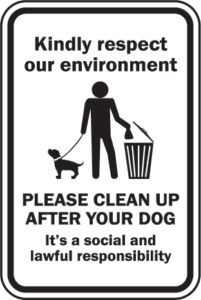 Beaches are one of the most traditional and enjoyable means of summer entertainment for families and individuals, and they provide a plethora of recreational activities for all ages. Protecting our beaches and recreational waters is imperative to the health of our nation’s citizens and economy, and we are fortunate that our nation’s governmental agencies and local communities proactively work to maintain the health of our waters. We as individuals can also help to protect our beaches and waterways by reducing our personal water consumption, cleaning up after our pets, and being mindful of pesticide and fertilizer usage. Together, we can assure that present and future generations are able to enjoy our nation’s beautiful beaches.
Beaches are one of the most traditional and enjoyable means of summer entertainment for families and individuals, and they provide a plethora of recreational activities for all ages. Protecting our beaches and recreational waters is imperative to the health of our nation’s citizens and economy, and we are fortunate that our nation’s governmental agencies and local communities proactively work to maintain the health of our waters. We as individuals can also help to protect our beaches and waterways by reducing our personal water consumption, cleaning up after our pets, and being mindful of pesticide and fertilizer usage. Together, we can assure that present and future generations are able to enjoy our nation’s beautiful beaches. It is scary to realize how complacent our country has become in accepting crumbling infrastructure as the norm. Our international competitors are investing more in high speed rail, modern airports, and bigger shipping ports, while just about every few months, some kind of preventable catastrophic infrastructure event happens in America. Yet our leaders are still not spurred into taking decisive action.
It is scary to realize how complacent our country has become in accepting crumbling infrastructure as the norm. Our international competitors are investing more in high speed rail, modern airports, and bigger shipping ports, while just about every few months, some kind of preventable catastrophic infrastructure event happens in America. Yet our leaders are still not spurred into taking decisive action.

 During Infrastructure Week, groups are coming together to recognize progress and leadership at the federal, state, and local levels – and there is much to celebrate. For example, communities throughout New England have been proactive in lead service line replacement, and the Massachusetts Water Resources Authority
During Infrastructure Week, groups are coming together to recognize progress and leadership at the federal, state, and local levels – and there is much to celebrate. For example, communities throughout New England have been proactive in lead service line replacement, and the Massachusetts Water Resources Authority  The first known dam to be built is the Jawa Dam, which is actually the largest in a series of dams that are all part of one reservoir system. Located in modern-day Jordan, the Jawa Dam was originally constructed around 3,000 BCE in what was then Mesopotamia. Surprisingly, the Jawa Dam was actually an architectural feat of the times. While most ancient dams were simple gravity dams constructed of gravel and masonry, the Jawa Dam was reinforced with rock fill behind the upstream wall in order to protect the wall from water pressure breach. This safety feature was incredibly innovative for this time period. Unfortunately, the reinforced design was forgotten after the Jawa Dam and was not actually “reinvented” until modern times. The Jawa Dam site is arguably the most important archaeological site in the history of large-scale water projects, and the dam itself was so well designed and constructed that the ancient structure stood until just a few years ago, when it was partially ruined due to physical intervention. In its prime, the Jawa Dam was 15 feet tall, 80 feet long, with a base of 15 feet. It created the Jawa Reservoir that had a capacity of 1.1 million cubic feet.
The first known dam to be built is the Jawa Dam, which is actually the largest in a series of dams that are all part of one reservoir system. Located in modern-day Jordan, the Jawa Dam was originally constructed around 3,000 BCE in what was then Mesopotamia. Surprisingly, the Jawa Dam was actually an architectural feat of the times. While most ancient dams were simple gravity dams constructed of gravel and masonry, the Jawa Dam was reinforced with rock fill behind the upstream wall in order to protect the wall from water pressure breach. This safety feature was incredibly innovative for this time period. Unfortunately, the reinforced design was forgotten after the Jawa Dam and was not actually “reinvented” until modern times. The Jawa Dam site is arguably the most important archaeological site in the history of large-scale water projects, and the dam itself was so well designed and constructed that the ancient structure stood until just a few years ago, when it was partially ruined due to physical intervention. In its prime, the Jawa Dam was 15 feet tall, 80 feet long, with a base of 15 feet. It created the Jawa Reservoir that had a capacity of 1.1 million cubic feet.




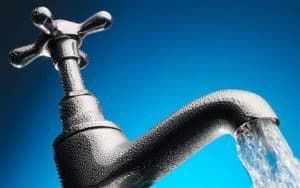 Water utilities today are faced with a unique set of difficulties. Population growth has resulted in unprecedented demand while climate change has caused supply to dwindle. Increased regulations have forced utilities to invest more and more capital into treatment while budgets have shrunk. In addition, our nation’s aging infrastructure has forced water utilities to heavily invest in repair and replacement of the distribution system. Therefore, it has become critical that utilities utilize the most cost-effective and efficient methodologies in order to maintain and improve their water systems.
Water utilities today are faced with a unique set of difficulties. Population growth has resulted in unprecedented demand while climate change has caused supply to dwindle. Increased regulations have forced utilities to invest more and more capital into treatment while budgets have shrunk. In addition, our nation’s aging infrastructure has forced water utilities to heavily invest in repair and replacement of the distribution system. Therefore, it has become critical that utilities utilize the most cost-effective and efficient methodologies in order to maintain and improve their water systems.
 Because demand is highest in summer and would make flushing impractical, and low temperatures in winter would cause unsafe conditions from flushed water freezing on roadways and sidewalks, flushing is typically performed in the spring and fall. Currently, Tata & Howard is assisting the communities of Haverhill and Manchester By The Sea, MA and Norwalk First Taxing District in Norwalk, CT with their annual UDF Programs. Both AWWA and MassDEP recommend that UDF be performed on an annual basis, at a minimum. If a distribution system is too large to perform UDF annually, flushing should instead be scheduled in rotation so that all parts of the distribution system are exercised on a regular basis.
Because demand is highest in summer and would make flushing impractical, and low temperatures in winter would cause unsafe conditions from flushed water freezing on roadways and sidewalks, flushing is typically performed in the spring and fall. Currently, Tata & Howard is assisting the communities of Haverhill and Manchester By The Sea, MA and Norwalk First Taxing District in Norwalk, CT with their annual UDF Programs. Both AWWA and MassDEP recommend that UDF be performed on an annual basis, at a minimum. If a distribution system is too large to perform UDF annually, flushing should instead be scheduled in rotation so that all parts of the distribution system are exercised on a regular basis. Earth Day, which falls on April 22 each year, is celebrated globally by over one billion people and is largely credited with being the catalyst for the modern environmental movement. The first Earth Day was celebrated in the United States in 1970, and was quickly followed by passage of the
Earth Day, which falls on April 22 each year, is celebrated globally by over one billion people and is largely credited with being the catalyst for the modern environmental movement. The first Earth Day was celebrated in the United States in 1970, and was quickly followed by passage of the 
 4. Repair leaky faucets and toilets
4. Repair leaky faucets and toilets
